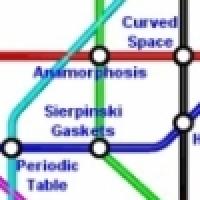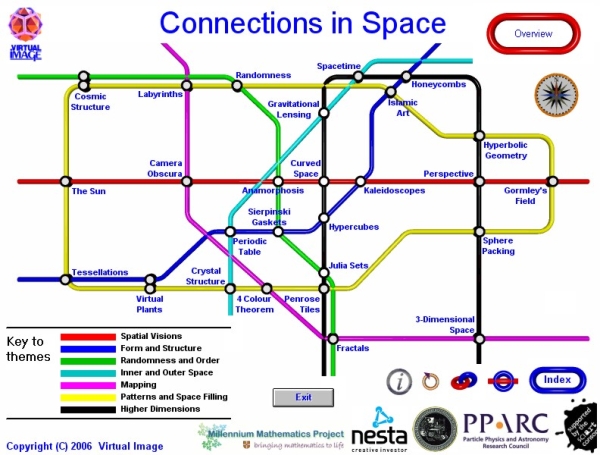
Connections in space
Are you fascinated by the maths in and art and the art in maths? Then a new piece of free educational software may be of interest to you. The Connections in Space CD-ROM examines the connections between artistic and scientific representations of space, where the word "space" is interpreted in the broadest possible sense. The project is a collaboration between the physicist and software expert Dr Nick Mee, the astrophysicist and mathematician Professor John D. Barrow, the historian of science and art Professor Martin Kemp and the artist Richard Bright. The project received its initial funding from the SciArt consortium in the year 2000. Further development has been funded by the Gruber Foundation, The Particle Physics and Astronomy Research Council, the National Endowment for Science, Technology and the Arts, the Millennium Mathematics Project (an educational initiative of which Plus is a part) and Virtual Image Publishing Ltd., the UK's leading developers of interactive educational software.

The Underground map of the Connections in Space CD-ROM
The software is built around a user interface based on an adaptation of the London Underground Map. The underground map, originally designed by Harry Beck, was inspired by electrical circuit diagrams and is regarded as a classic piece of design. It is a great example of the influence of science on art and design. There are seven lines on the adapted underground map on the CD-ROM, each representing a theme such as randomness and order, form and structure and higher dimensions. A total of 57 stations correspond to topics like fractals, perspective and spacetime, featuring artworks ranging from Leonardo's Mona Lisa to the exotic millinery of Pip Hackett. For each station there is a short article describing the topic.
The CD-ROM has been distributed to all UK schools and is supplied with a free unlimited user site licence. For a free copy please send an A5 self-addressed envelope with a standard first class / 32p stamp (larger envelopes will incur more postage) to:
Plus DVD request
Millennium Mathematics Project
Centre for Mathematical Sciences
Wilberforce Road
Cambridge CB3 0WA